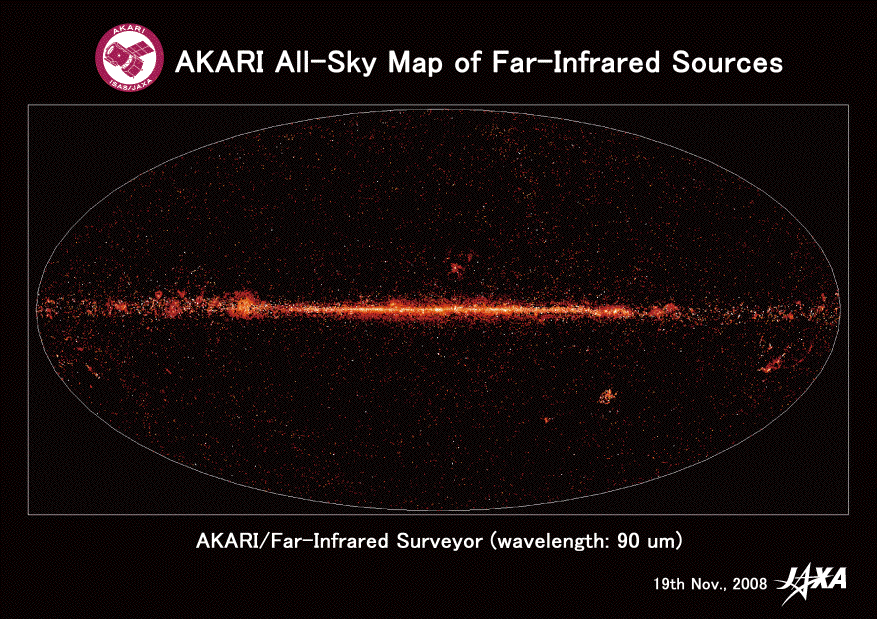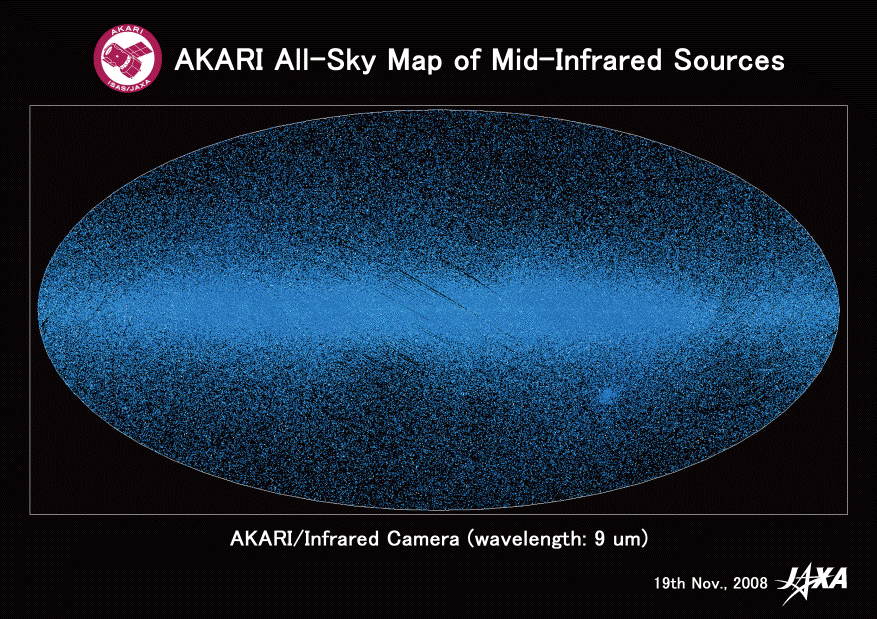Topics
The release of the initial version AKARI infrared source catalogue
The initial version infrared source catalogue based on the AKARI All-Sky Survey is completed. The catalogue contains about three times large number of sources compared to the so far widely used IRAS (Infrared Astronomical Satellite) catalogue. The AKARI catalogue is expected to lead the future astronomical researches.
The AKARI catalogue consists with two parts; the mid-infrared catalogue at 9 and 18 micrometers containing about 700,000 sources and the far-infrared catalogue that consists with about 64,000 sources measured at four wavelengths of 65, 90, 140, and 160 micrometers. Both catalogues contain about three times large number of sources compared to those with corresponding quality in the IRAS catalogue.
Figure 1 and 2 plot the sources detected at 90 and 9 micrometers, respectively, on the sky map. Bright stripe along horizontal direction in the middle of the map is the Galactic Plane. The centre of our Milky Way galaxy is at the centre of the maps. In the far-infrared map we see very clearly the regions where active star formation is taking place. Distant galaxies that actively running star formation are also detected. The mid-infrared map is dominated by the population of stars in the Milky Way as thick stripe.
Scientific analysis based on the data has been started. In parallel, evaluation and improvements of the catalogues are continued toward the public release scheduled one year later.

Figure 1: The infrared sources in the AKARI catalogue detected at 90 micrometers are plotted on the sky map. About 64,000 sources are presented. The colour of the dots indicates the brightness of the sources; brighter from red to white. The stripe along the horizontal direction is the Milky Way. The centre of our Galaxy is at the centre of the image. Sources distributed far from the Milky Way are mostly galaxies with star formation activity.

Figure 2: The infrared sources in the AKARI catalogue detected at 9 micrometer are plotted on the sky map. About 700,000 sources are shown. Colour indicates the brightness of the sources; the brighter from blue to white. Stellar population in our galaxy dominates the plot and seen as a thick stripe along the Galactic Plane.
Materials
- Figure 1 (© JAXA)
- Figure 2 (© JAXA)





